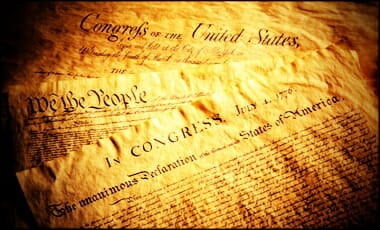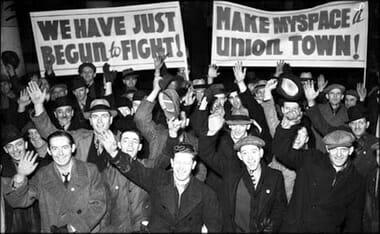WHICH PARTY OPPOSED CIVIL RIGHTS?
The voting rolls of the Civil Rights laws speak for themselves. The Civil Rights Act of 1964 passed the House with 153 out of 244 Democrats voting for it, and 136 out of 171 Republicans. This means that 63 percent of Democrats and 80 percent of Republicans voted “yes.” In the Senate, 46 out of 67 Democrats (69 percent) and 27 out of 33 Republicans (82 percent) supported the measure.
The pattern was similar for the Voting Rights Act of 1965. It passed the House 333-85, with 24 Republicans and 61 Democrats voting “no.” In the Senate, 94 percent of Republicans compared with 73 percent of Democrats supported the legislation.
Here’s a revealing tidbit: had Republicans voted for the Civil Rights laws in the same proportion as Democrats, these laws would not have passed. Republicans, more than Democrats, are responsible for the second civil rights revolution, just as they were solely responsible for the first one. For the second time around, Republicans were mainly the good guys and Democrats were mainly the bad guys.
Here’s further proof: the main opposition to the Civil Rights Movement came from the Dixiecrats. Note that the Dixiecrats were Democrats; as one pundit [Coulter] wryly notes, they were Dixiecrats and not Dixiecans.
The Dixiecrats originated as a breakaway group from the Democratic Party in 1948. For a time, the Dixiecrats attempted to form a separate party and run their own presidential ticket, but this attempt failed and the Dixiecrats reconstituted themselves as a rebel faction within the Democratic Party.
Joined by other Democrats who did not formally ally themselves with this faction, the Dixiecrats organized protests against desegregation rulings by the Supreme Court. Dixiecrat governors refused to enforce those rulings. Dixiecrats in the Senate also mounted filibusters against the Civil Rights Act of 1957 and the Civil Rights Act of 1964. Johnson’s Democratic allies in Congress required Republican votes in order to defeat a Dixiecrat-led filibuster and pass the Civil Rights Act of 1964.
Leading members of the Dixiecrat faction were James Eastland, Democrat from Mississippi; John Stennis, Democrat from Mississippi; Russell Long, Democrat from Louisiana; Strom Thurmond, Democrat from South Carolina; Herman Talmadge, Democrat from Georgia; J. William Fulbright, Democrat from Arkansas; Lester Maddox, Democrat from Georgia; Al Gore Sr., Democrat from Tennessee; and Robert Byrd, Democrat from West Virginia. Of these only Thurmond later joined the Republican Party. The rest of them remained Democrats.
The Dixiecrats weren’t the only racists who opposed civil rights legislation. So did many other Democrats who never joined the Dixiecrat faction. These were racists who preferred to exercise their influence within the Democratic Party, which after all had long been the party of racism, rather than create a new party. Richard Russell of Georgia—who now has a Senate Building named after him—and James Eastland of Mississippi are among the segregationist Democrats who refused to join the Dixiecrat faction.
Now the GOP presidential candidate in 1964, Barry Goldwater, did vote against the Civil Rights Act. But Goldwater was no racist. In fact, he had been a founding member of the Arizona NAACP. He was active in integrating the Phoenix public schools. He had voted for the 1957 Civil Rights Act.
Goldwater opposed the 1964 act because it outlawed private as well as public discrimination, and Goldwater believed the federal government did not have legitimate authority to restrict the private sector in that way. I happen to agree with him on this—a position I argued in The End of Racism. Even so, Goldwater’s position was not shared by a majority of his fellow Republicans.
It was Governor Orval Faubus, Democrat of Arkansas, who ordered the Arkansas National Guard to stop black students from enrolling in Little Rock Central High School—until Republican President Dwight Eisenhower sent troops from the 101st Airborne to enforce desegregation. In retaliation, Faubus shut down all the public high schools in Little Rock for the 1958-59 school year.
It was Governor George Wallace, Democrat of Alabama, who attempted to prevent four black students from enrolling in elementary schools in Huntsville, Alabama, until a federal court in Birmingham intervened. Bull Connor, the infamous southern sheriff who unleashed dogs and hoses on civil rights protesters, was a Democrat.
Progressives who cannot refute this history—facts are stubborn things—nevertheless create the fantasy of a Nixon “Southern strategy” that supposedly explains how Republicans cynically appealed to racism in order to convert southern Democrats into Republicans. In reality Nixon had no such strategy—as we have seen, it was Lyndon Johnson who had a southern strategy to keep blacks from defecting to the Republican Party. Johnson, not Nixon, was the true racist, a fact that progressive historiography has gone to great lengths to disguise.
Nixon’s political strategy in the 1968 campaign is laid out in Kevin Phillips’s classic work The Emerging Republican Majority. Phillips writes that the Nixon campaign knew it could never win the presidency through any kind of racist appeal. Such an appeal, even if it won some converts in some parts of the Lower South, would completely ruin Nixon’s prospects in the rest of the country. Nixon’s best bet was to appeal to the rising middle classes of the Upper South on the basis of prosperity and economic opportunity. This is exactly what Nixon did.
There are no statements by Nixon that even remotely suggest he appealed to racism in the 1968 or 1972 campaigns. Nixon never displayed the hateful, condescending view of blacks that Johnson did. The racist vote in 1968 didn’t go to Nixon; it went to George Wallace. A longtime Democratic segregationist, Wallace campaigned that year on an independent ticket. Nixon won the election but Wallace carried the Deep South states of Arkansas, Louisiana, Mississippi, Alabama, and Georgia.
Nixon supported expanded civil rights for blacks throughout his career while Johnson was—for the cynical reasons given above—a late convert to the cause. Nixon went far beyond Johnson in this area; in fact, Nixon implemented America’s first affirmative action program which involved the government forcing racist unions in Philadelphia to hire blacks.
To sum up, starting in the 1930s and continuing to the present, progressive Democrats developed a new solution to the problem of what they saw as useless people. In the antebellum era, useless people from the Democratic point of view were mainly employed as slaves. In the postbellum period, southern Democrats repressed, segregated, and subjugated useless people, seeking to prevent them from challenging white supremacy or voting Republican. Meanwhile, northern progressives like Margaret Sanger sought to prevent useless people from being born. Today’s progressives, building on the legacy of Wilson, FDR, and Johnson, have figured out what to do with useless people: turn them into Democratic voters.











